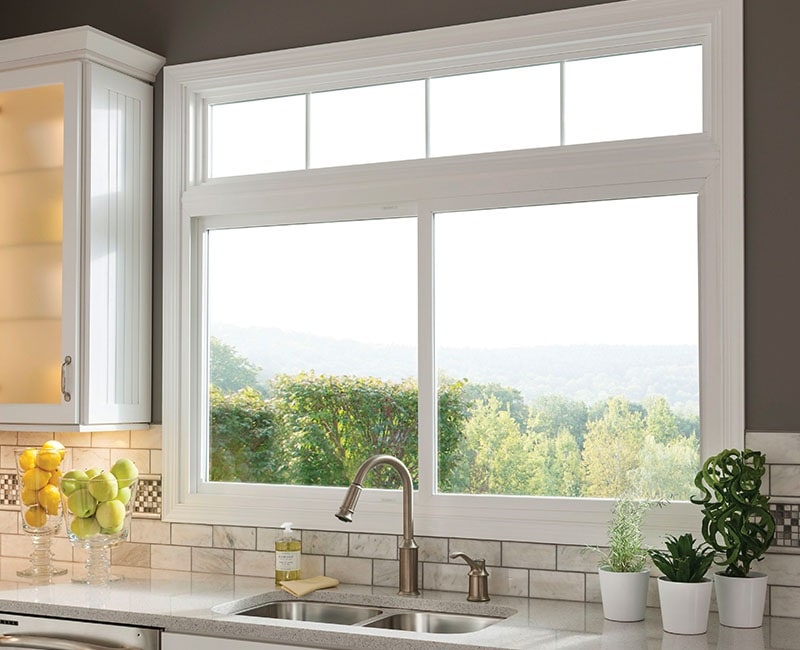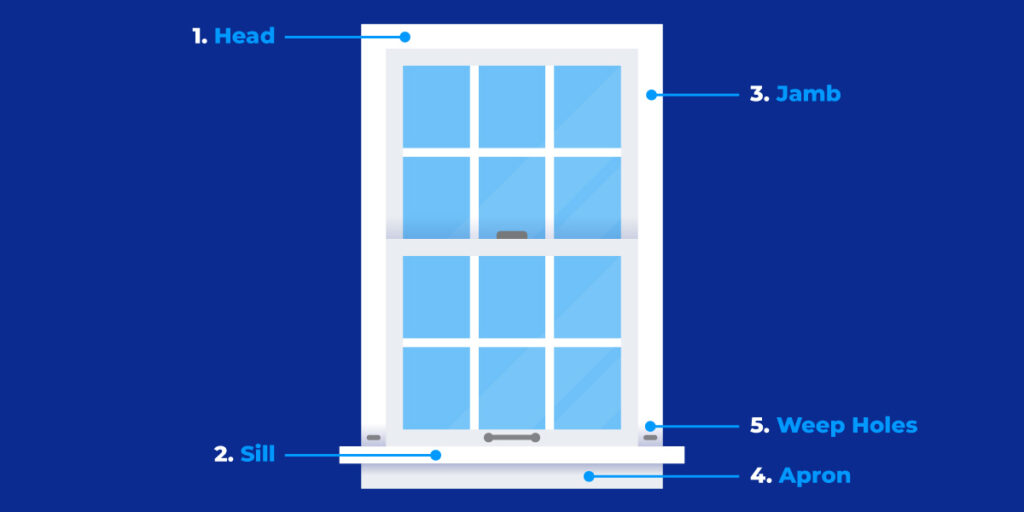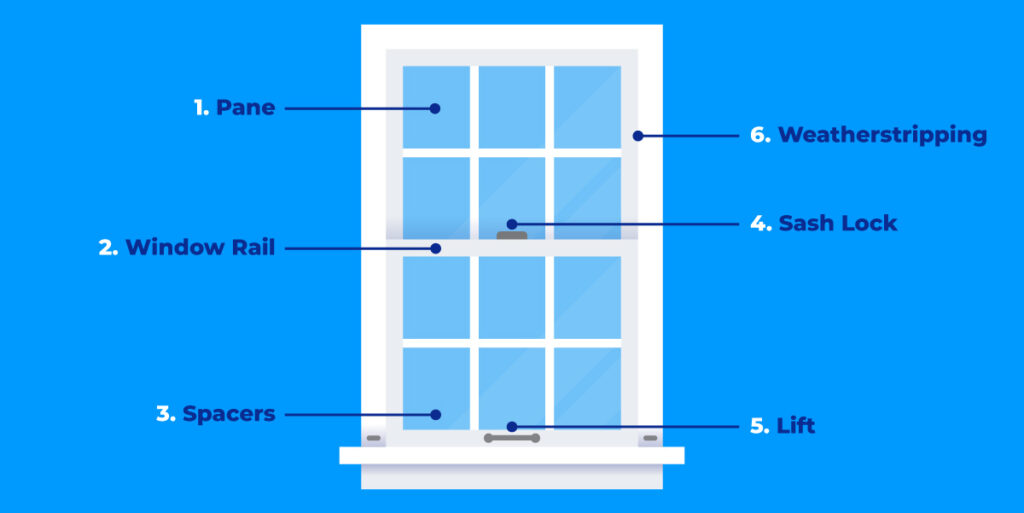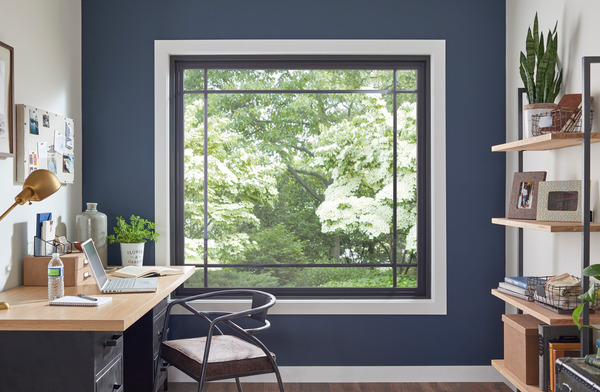You may be familiar with terms like windowsills and window panes, but it’s understandable if you can’t name every window part. If words like aprons, mullions and jambs aren’t in your vocabulary, our window terminology guide is here to help. We’ll teach you basic window anatomy that’ll help you speak the lingo like an expert the next time you’re looking to upgrade the windows on your Cleveland home.
Why Should Cleveland Homeowners Be Aware of the Correct Terminology?
A solid grasp of the window terminology can greatly empower Akron homeowners as they contemplate window replacement. This allows for more precise communication with window professionals, protection against misleading sales tactics and informed decision-making—which all lead to a more successful and satisfying window replacement experience.
Common Window Types
Windows play a crucial role in defining the character and functionality of a home. They allow in natural light, add beauty inside and out and affect your home’s energy efficiency. When it comes to selecting the right windows for your Cleveland home, it’s essential to know the most common window types and their distinguishing features. Explore what replacement window style is right for you:

- Double-Hung Windows: This classic window style features two vertically sliding sashes that open from both the top and bottom. This allows for improved airflow while maintaining a timeless and versatile appeal.
- Sliding Windows: Sliding windows have a space-saving design with a single moving sash that glides open horizontally. They’re easy to operate, provide unobstructed views and create a sleek, modern appearance.
- Casement Windows: Casement windows are hinged at the side and open outward (similar to a door) using a crank mechanism. They boast excellent ventilation, a tight seal when closed for energy efficiency and panoramic views when open.
- Bay & Bow Windows: Bay and bow windows extend toward the outside, creating a charming alcove or bay-like space. They’re popular for maximizing your living area and view, infusing more natural light into the room and adding architectural interest to your home’s exterior.
- Awning Windows: Awning windows are hinged at the top and open outward, which make them ideal for maintaining airflow in inclement weather without letting rain inside. Some options can hinge at the bottom and swing downward.
- Custom Windows: Designed for unconventional shapes, sizes and architectural spaces, custom windows are tailor-made to your home when standard windows don’t cut it. Window World of Cleveland can craft the perfect window for your unique space.
Exterior Parts of a Window Frame
The window frame surrounds and supports the window pane and can be made of aluminum, fiberglass, wood or vinyl. Each part of the exterior frame is a distinct component of a window:

- Head: The head of a window is the horizontal top part of the frame, which helps to support the structure and maintain the window’s integrity.
- Sill: The window sill is the horizontal bottom piece of the window frame that serves as both a structural support and a barrier against moisture infiltration.
- Jamb: The jambs are the vertical sides of the window frame that provide stability and contain tracks or rails that let the windows open.
- Apron: The apron is a decorative molding that is installed below the windowsill. It adds an aesthetic touch while protecting the wall beneath the window from moisture.
- Weep Holes: Weep holes are small openings built into the bottom of metal and vinyl window frames. They allow precipitation that collects in the window tracks to drain off.
Interior Parts of a Window Sash
Your window sash is the moveable part of the window that houses the pane of glass. But it’s much more than just the part that holds the glass. Here are the components of a window sash:

- Pane: The window pane is the piece, or pieces, of glass in your window.
- Window Rail: The horizontal part of the frame at the top and bottom of the sash is called a window rail. They contain grooves that hold the window panes.
- Spacers: Spacers separate and support the different panes of glass in a window. Window World of Cleveland windows use the Intercept™ warm-edge spacer system to provide superior insulation and extend the life of your windows.
- Sash Lock: This is the locking mechanism that prevents rattling and drafts and keeps your windows secure.
- Lift: The lift is the handle for lifting and lowering the sash.
- Weatherstripping: Weatherstripping is used to seal gaps and cracks where the window frame and sash meet. It provides an extra layer of energy efficiency and protection against the elements.
Additional Window Parts
A window is more than a frame and a pane. Here are some other window part names you should know:
- Casing: The casing (aka window trim) is the decorative molding that surrounds the exterior window frames. It seals gaps between the window frame and the wall to prevent drafts from entering your home.
- Mullion: A mullion is a vertical or horizontal structural piece that divides the frame into different sections. It creates the appearance of separate smaller windows within a larger window frame.
- Grilles: Grilles are decorative pieces that create a visually appealing grid pattern on the window. They can also provide additional security and protection.
- Fixed Panel: Also called the stationary or picture window panel, a fixed panel is an unmovable, non-operable glass pane that does not open or close. It is most commonly seen in single-hung windows.
What Makes a Window Energy Efficient?
Windows are so much more than just their parts. It’s important that they’re energy efficient. Here are some key terms about energy efficiency to help you select the most energy-saving windows for your needs!
- Low-E Glass: Low-E glass (short for low-emissivity glass) is a type of window glass that has been treated with a thin, invisible coating designed to filter the amount of UV light that enters your home. This coating helps reduce heat transfer and energy costs all year.
- Argon Gas: Argon gas is used as an insulator in double and triple-pane windows. Combined with Low-E glass, this colorless, odorless gas keeps the window closer to room temperature, helping eliminate drafts and increase energy efficiency.
- Intercept™ warm-edge spacer system: This spacer minimizes condensation and keeps the edges of glass windows warmer, creating a more comfortable temperature year-round.
Tips for Cleveland Homeowners After Learning Window Terminology
Understanding the terminology of window components is just the first step in the window replacement process for Cleveland homeowners. You should also look out for signs to upgrade your windows like higher energy costs, more drafts, visible damage, condensation between panes or an outdated appearance. While minor repairs might be enough, major damage may necessitate a full window replacement.

When you’re talking with window replacement experts, be prepared to obtain multiple quotes for price and service comparisons, inquire about warranties from the window professional or the manufacturer, explore energy-efficient choices and learn about the installation process to ensure you pick the right windows for your Cleveland residence.
Upgrade for Premium Window Design
At Window World of Cleveland, our windows are meticulously crafted with your needs in mind, delivering unparalleled strength, security, visual appeal and energy efficiency. When you’re ready to enhance your home’s windows, our window experts are here to review all the window terms and replacement benefits with you. Contact us today to request your free estimate.